I was not supposed to have any field trip for this low tide season since the tide is not super low and I have tons of work to clear up. But my stand was shakened when I saw that Ron, Samson and Siyang found the six-armed sea star (Luidia penangensis) from Changi yesterday. This is because this six-armed sea star is one of the two remaining sea star species that I have not personally seen intertidally.
Therefore, I decided to sacrifice some sleep in the predawn hours to try and see this illusive star for myself. Glad Ron was also thinking to revisit Changi so the duo of us went off in search of special stars at 4am.
Unfortunately, we couldn't find any Luidia penangensis or Luidia hardwicki that we were searching for. The tide was playing a fool of us as it did not go down as much as expected again (Yes I experienced this before!). Nevertheless, there was a bigger surprise awaiting which was revealed right at the end of the trip.
Despite the not-so-low-tide, I found this beautiful and stunning pinkish cake sea star (Anthenea aspera) which enthrilled both of us.
A closer look at the aboral surface reveals many minute pincer-like structures known as pedicellariae. The snapping actions of these structures help to defend against small attacking or settling organisms and also to keep the surface clean.
The yellowish circle part is believed to be the madroporite. The madroporite is a sieve-like button-shaped structure on the top surfaces of sea stars. It serves as the external opening of the water vascular system.
The underside of this pretty cake sea star :-)
The shore at Changi is rich in cake sea stars, and we found several others with different colour variations.
The underside of the above cake sea star.
Ron found this rather large biscuit sea star (Goniodiscaster scaber) which are surprisingly very common! I like this particular biscuit sea star because of its orange and brownish body.
How do you identify biscuit sea star?
This is a common question asked by friends whom I've brought them out for shore trips. Dr Lane's "A Guide to Sea Stars and Other Echinoderms of Singapore" stated that the oral surface of biscuit sea stars should be off-white, sometimes with purple pigmentation around the mouth and extending along either side of the grooves on the arms.
Ron also found this special four-armed Gymnanthenea laevis sea star.
From the underside, we can speculate that it is four-armed not because one was autotomized or bitten off, but it has been like that since it was a juvenile. This is so because from the centre, there are only four grooves of the arms radiating out.
There were several other types of sea cucumbers like this plain looking one, on top of the warty and thorny sea cucumbers.
There were also the usual gang of anemones like this one on top of the carpet anemones, peacock anemones etc.
Ron found this orange seahorse that we don't commonly find as compared to the yellowish ones.
However, we also had several encounter with the dead or dying.
It was sad to see this stingray died because it was hooked to a fishing line left behind at the shore. The olive snail was fast to start feeding on the body.
But the most saddening yet shocking or exciting part of the trip was during the moment where we were just about to leave the shore at the "end".
I spotted this dead body of a sea star that is HUGE in size. A closer look reveals that this is highly likely to be the body of the eight-armed sea star (Luidia maculata).
This is a photo of the eight-armed sea star taken earlier this month when I visited Changi. The arm of this particular one is about 10cm which is the usual size we see on the shores.
Guess what was the radius of the arm of this dead sea star found? It is about 20-30cm long! My ruler reads 30cm in maximum.
The central disk itself is already about 8cm in diameter! What a gigantic sea star!
There was not only one of such carcass found but FOUR.
Can you see how huge these eight-armed sea stars can be as compared to the 30cm ruler?
This fourth one had most of its arm already detached. However, it wasn't rotting as badly as the above few.
One can see that its arm still look quite fresh, with patterns similar to the ones we seen alive previously.
We were puzzled and caught in a surprise how large they can be. 20-30cm of arm lengths may be an understatement since these are rotting arms. Those alives might be even bigger.
Immediately after returning home, I referred to Dr Lane's "A Guide to Sea Stars and Other Echinoderms of Singapore" and indeed Dr Lane mentioned the eight-armed sea star to be a large sea star with eight arms, each often exceeding 20cm in length. We feel these giant stars tend to only be found subtidally since no one has seen such a large one alive in the intertidal area and that those large sea stars that Dr Lane recorded were collected in a trawled hauled from the sea bed. That is probably why we only see these large ones when they are dead and stranded on the high shore.
Today's discovery could possibly suggest that Singapore's largest sea star is not the knobbly sea star or the cushion sea star but the eight-armed sea star!
Sunday, August 31, 2008
Singapore's largest sea star!
Tuesday, August 19, 2008
There is life at Pasir Ris beach
Just less than a month ago, there were several reports regarding the unacceptable water quality at Pasir Ris Beach. The NEA decided to warn against swimming off Pasir Ris Beach because high levels of bacteria normally found in the faeces of warm-blooded animals were found in the water.
Does the poor water quality due to high bacteria count means that the shore of Pasir Ris is dead and badly diseased?
You're wrong. I was surprised to see a galaxy of sand stars (Astropecten sp.) this morning.
Yes, my friends: Khairul, Ginny, Xiuli and I were at Pasir Ris at 5am for my sand star project. We were amazed to see many sand stars at the shore.
Interestingly, I was asked whether should we use gloves today due to the high bacteria count report. I guess so long as the seawater doesn't enter your mouth or eyes, it is not a problem. Always remember to wash your hands before handling food: I learnt this lesson the hard way as I got diarrhoea for one week after my P. Hantu trip which is likely due to dirty hands touching tibits.
We also encountered two Cake sea stars (Anthenea aspera). This is the larger star which is adult-sized! If you look closer, you would have realized you missed other living organisms.
Yes, there are quite a number of these common shrimps near the arms of the cake sea star. I wonder is there an association between shrimps and sea stars?
A rough or "agar" guage of a decent living shore is sometimes to see if there are octopus. Indeed we saw something purplish and small flashing across.
Yes it is an octopus, and it's a juvenile one. It looks miniature and cute.
The substrates at Pasir Ris shores are usually silty. This favours anemones in general.
I saw this elegant looking glass anemone.
There is this unidentified sea anemone on the shore and to my surprise, there is a semi-buried sand star just right next to the anemone.
Though not true anemones, peacock anemones add colour and variety to any intertidal shore. They are usually accompanied with back phoronid worms near the stalk of the peacock anemone. That's not all...
There's more life in this photo: tubeworms (bottom left) and
a tiny goby at the bottom right of the previous photo.
There are also sponges enrusted on hard surfaces. One would ask, is it an animal or plant?
Actually sponges are animals, and are simple animals. It's okay if you think they are plants because scientists used to know sponges as plants long time ago.
I had an encounter with this striped eeltail catfish that was trapped on the sand during low tide. Gently, I tried to return this poor stranded fish back into deeper waters.
Today we also saw a huge stranded jellyfish!
Here's Khairul and Ginny with the smaller cake sea star (with brilliant yellow tips on its arms) found by Xiuli.
As usual, Xiuli is still photoshy! Haha. Need to be more paparazzi to take her photos next time.
Am very grateful they sacrificed their sleep hours to come and help me with my survey. We had a good time at Pasir Ris and it's nice to visit a mainland shore with the convenience of not needing to charter a boat and van (as to visiting Chek Jawa at P. Ubin).
Sunday, August 17, 2008
Changi shore with lunar eclipse
Today while we were at Changi for a predawn intertidal trip, we noticed something weird with the moon. A low spring tide occurs either during full moon or new moon.
How come the moon was a cresent this morning?
Liana revealed to us it is actually a rare event: a lunar eclipse! This photo was taken at 4.37AM.
At 5.00AM sharp, you can see more of the elipse effect. The dark part covering the full moon is actually the shadow of the earth.
However, the lunar eclipse is only a partial one. At 5.26AM, you can see that the eclipsing shadow is retreating away from "engulfing" the whole moon.
What has the moon got to do with low tide trips? Well, it's nice to witness a lunar eclipse personally after about 5 years but the moon is the main reason for the pull of low tides and high tides on earth through its gravitational effect. Without the moon, we will not have variations of tides, which means no super low tide to reveal the gems of the shores.
Back to the shore, Liana and Yuchen found this dead shark!
It takes very little time for these snails to feast on the shark buffet.
I encountered a much much larger snail: a noble volute!
This venus clam seems to have caught our attention today. According to Ria's Chek Jawa online guide, "Like many other bivalves, clams are filter feeders. They lie buried in the sand and extend their siphons to the surface at high tide. They use their siphons to suck in water and filter out microscopic food. The water also brings fresh oxygen to the animal."
This is the siphon that sucks in water and filters for food. Can you see the filter tentacles?
We were amazed how meaty the venus clam is. Exactly! Clams are among the favourite seafood of people everywhere. However, clams may be affected by red tide and other harmful algal blooms. Such clams can then be harmful to eat.
I witnessed for the first time how the clam suddenly extended its foot out and leap across the sand. Unfortunately, I couldn't capture the photograph sharply, this is a consolation to share with you guys :-)
Today's trip was primarily for my sand star project and also to look for button shell recruits. Indeed, Ria found a small patch of new recruits! Yay.
There were many different types of sea cucumbers at Changi.
Some are weird looking which we don't really know what the id is.
This is yet another unidentified sea cucumber.
And its underside.
Interesting, this has been seen at Cyrene Reef before and I've found at Chek Jawa as well. The photo above is taken from Chek Jawa.
I like the patterns of the feeding tentacles of this warty sea cucumber. It is so brillantly colourful!
Soon it was time to leave the shore to head to Changi Village for some breakfast.
We encountered many beautiful parakeets.


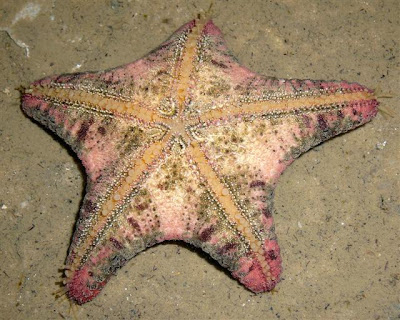







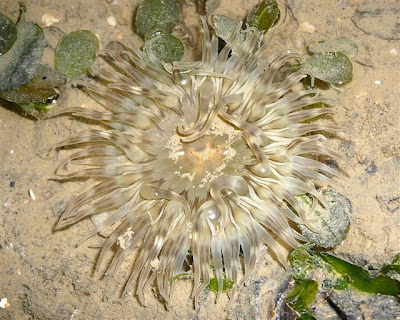
























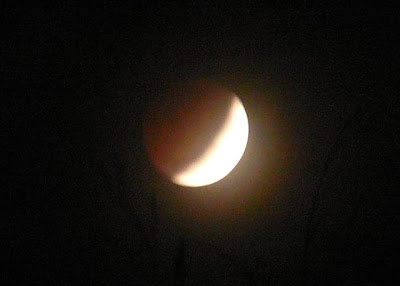



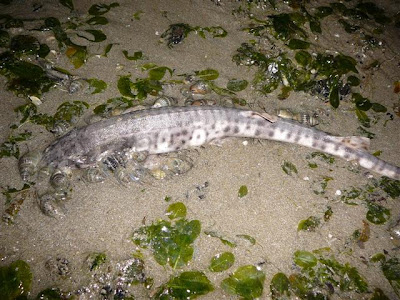



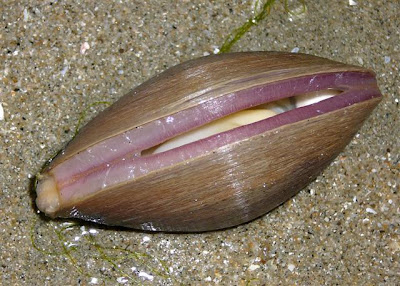













.jpg)

